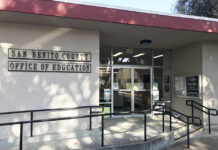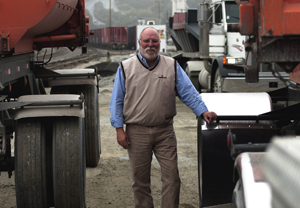Life in the fast lane at Hellyer
I can almost certainly bet that I had a better time last
Saturday than you.
We began with a morning pedal to Bolado Park Golf Course for
breakfast on the large veranda of the new clubhouse building. After
getting assurances that one need not have to play golf in order to
enjoy the place, we relaxed over coffee, watching a few golfers
finishing their rounds and admiring the birds that fill the
trees.
After a return home to some mundane chores we climbed into the
car and drove to Hellyer Park in southeast San Jose, making a quick
stop for Vietnamese sandwiches on the way.
Life in the fast lane at Hellyer
I can almost certainly bet that I had a better time last Saturday than you.
We began with a morning pedal to Bolado Park Golf Course for breakfast on the large veranda of the new clubhouse building. After getting assurances that one need not have to play golf in order to enjoy the place, we relaxed over coffee, watching a few golfers finishing their rounds and admiring the birds that fill the trees.
After a return home to some mundane chores we climbed into the car and drove to Hellyer Park in southeast San Jose, making a quick stop for Vietnamese sandwiches on the way.
The park contains a velodrome, a steeply banked track, 333 meters long, dedicated to bicycle racing. After paying a $6 park entrance fee, we settled in right at the finish line and launched into our sandwiches. The park last week was host to the Masters Track National Championships.
It might have been national championships, but it was nevertheless pretty low key. No admission fee beyond the $6 to enter the park was charged. Riders roamed the infield, or sat in the stands. Insiders traded banter and the track judge tossed off inside jokes.
Then it was announced that kegs of free microbrewed beers were available at two locations.
I told you my Saturday was better than yours.
As we tore into our $2.50 sandwiches, we listened to the insiders around us and picked up some of the finer points of track racing.
It’s immediately obvious that the riders were not on garden variety Schwinns. First, the bikes are without brakes. They also have no mechanism that allows coasting. The rear cog is threaded onto its hub and held in place with a lock ring. In order to stop, riders must pull back on their spinning pedals. Most of the bikes were crafted of carbon or other chemistry lab concoctions.
Then there were the races themselves. When we arrived at about 6 p.m., the temperature stood at 102. That’s a little uncomfortable for trying to win national championships. But it soon cooled to a temperature that was just right for watching other people try to win national championships.
“Masters” in bicycle racing means “old.” Some of the competitors were younger than me, and others were well into the wrong side of 60.
Saturday’s races took two forms. Most of the evening was spent in match sprints. The races are short – two laps – and only two riders are on the track in each race. Upon starting, riders typically stay high on the banks, and move at a pace that a kid on a tricycle would deem leisurely. It looks like anything but a race.
Each rider is trying to gain advantage of position while conserving energy. The idea is to either get the other rider to take the lead, then to tuck into his or her slipstream until pulling out for a furious sprint to the finish, or to delay the whole sprint thing until near the finish when both riders will try to get the drop on the other.
It sounds pretty straightforward, but to the initiated, the game has as much strategy as chess and enough speed to make a NASCAR fan happy.
The field contained former Olympians and riders from as far away as Florida and Hawaii.
The other races held Saturday were longer, 30 laps or just over 6 miles. These points races put the entire age group on the track at once, with fields ranging up to 17 riders. After every six laps – two kilometers – riders compete in a points lap. The rider leading at the end of the points lap earns 5 points, second place gets 3, third gets 2 and fourth gets 1. Six laps later, the whole drama repeats itself.
The intervals between points laps are long enough that the field can get pretty thoroughly reshuffled. In one race a powerful rider made a bold play and rode away from the field, eventually gaining a full lap and 20 bonus points on all other competitors.
The racing is colorful, the crowd enthusiastic and the atmosphere friendly. People broke out picnics and traded bottles of water or glasses of wine.
Driving back home through the warm, dark night, we agreed that we’d had a pretty good day of it for a grand total of $11 for dinner and a show.
More information on the Hellyer Park Velodrome is available on the Web at www.ridethetrack.com.








